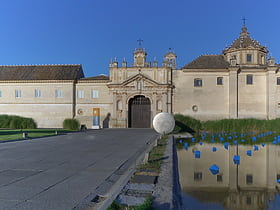Seville: Gothic Architecture
Places and attractions in the Gothic architecture category
Categories
- Museum
- Church
- Baroque architecture
- Area
- Historical place
- Architecture
- History museum
- Art museum
- Gothic architecture
- Park
- Sacred and religious sites
- Palace
- Specialty museum
- Unesco
- Bridge
- Memorial
- Vernacular architecture
- Tower
- City
- Sport
- Sport venue
- Concerts and shows
- Square
- Shopping
- Neighbourhood
- Arenas and stadiums
- Library
Seville Cathedral
Gothic structure with iconic bell tower Seville Cathedral, officially known as the Cathedral of Saint Mary of the See, stands as one of the most magnificent religious structures in the world and an iconic symbol of Seville, Spain. This Gothic architectural marvel is not only a testament to the city's rich...
Alcázar of Seville
Iconic Moorish-Renaissance royal palace The Alcázar of Seville is a stunning example of Moorish architecture and royal grandeur, nestled in the heart of Seville, Spain. Originally a Moorish fort, the Alcázar has been the residence of monarchs for centuries and is one of the oldest palaces still in use in...
Giralda
Bell tower atop a former minaret The Giralda is an iconic tower that stands proudly in the historic heart of Seville, Spain. As a former minaret turned bell tower, it is a testament to the city's layered history, where Islamic and Christian architectural elements blend seamlessly.
Monastery of Santa Maria de las Cuevas
Nestled in the historic heart of Seville, Spain, the Monastery of Santa Maria de las Cuevas embodies a profound blend of cultural heritage and artistic expression. More commonly known as La Cartuja, this former monastery has been transformed into a contemporary art...
Seville Royal Dockyards
The Seville Shipyards is a medieval shipyard in the city of Seville. They were operative between the 13th and 15th centuries, and are built in Gothic style.
Ex-Monastery of San Isidoro del Campo
The Monastery of San Isidoro del Campo is a monastery located in Santiponce, Spain. It was declared Bien de Interés Cultural in 1872. The monastery was founded in 1301 by Alonso Pérez de Guzmán. The interior houses an altarpiece by Juan Martínez Montañes.
Map






